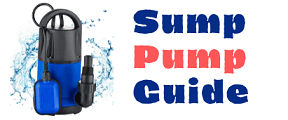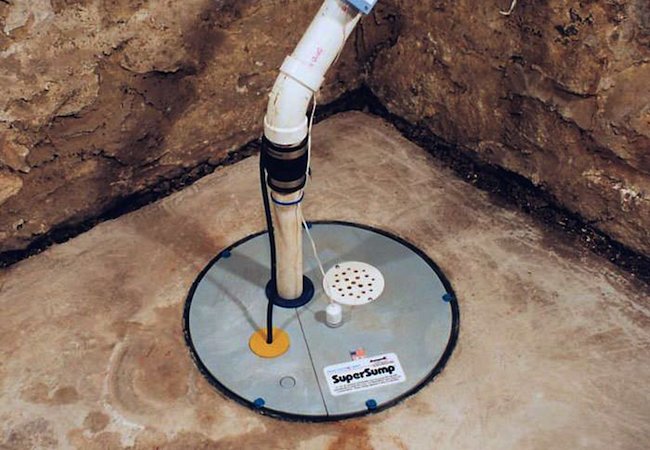The life of your sump pump is affected by many factors, including the height of water in your sump pit, the type of pump, how often it’s used, pump capacity, motor type, and pump type, and how well it’s maintained.
If properly cared for and maintained, a sump pump can last up to 10 years.
A sump pump is a device that helps prevent water from collecting in crawl spaces and basements by removing the excess water.
They come in two main types: submersible and pedestal.
Submersible pumps are more common and sit below the water level in the sump pit, while pedestal pumps are less common and sit on top of the water.
Here are some factors that will affect how long a sump pump lasts.
Water Level
The first factor is the height of water in your sump pit.
The higher the water level, the more work the pump has to do and the shorter its lifespan will be.
If you have a close-to-the-ceiling level of water, it will cause your pump to work more frequently and for longer durations.
If there are only a couple of inches of water, this will increase the life of your sump pump.
Sump Pump Capacity
The second factor is the pump’s capacity.
Pumps come in different sizes, with some pumps rated for 1,000 gallons per hour (gph) and others for 5,000 gph.
The size of your pump will affect how long it lasts.
When a pump is sized incorrectly, it will work harder and last less than one that is correctly sized.
A pump that is too large for the water level will also have to work harder, causing more wear and tear on the motor.
Obviously, if you have a very high water level, you will need a pump with a higher capacity than if the water level is only a few inches high.
Motor Type
The third factor is the type of motor in your sump pump.
There are two types of motors: sealed and open.
A sealed motor is waterproof and can handle being in an environment where it’s splashing around in the water.
An open motor is not waterproof and should be kept out of the sump pit so that it doesn’t get wet or damaged.
If your pump is in a wet environment, you should use a sealed motor.
If your pump is in a dry environment, you can use either type of motor.
If you have a sealed motor, it will last longer than an open motor.
Sump Pump Type
The fourth factor is the type of sump pump.
Generally speaking, a submersible pump will last 2-5 years, while a pedestal pump will last 3-7 years.
Submersible pumps are more powerful than pedestal ones because they move more water through their use of an impeller rather than a diffuser to move the water out of the pit.
However, even submersible pumps have varying levels of power and some are better than others at removing water from a pit.
Pedestal pumps generally have a longer lifespan than submersible pumps, but they also require more maintenance.
Pedestal pumps sit on top of the water in the pit, while submersible pumps are placed below the water level.
The advantage of a submersible pump is that it’s less likely to become clogged because there is less chance for debris to accumulate around the pump.
However, if a submersible pump does become clogged, it can be very difficult to clear the obstruction.
Pump Material
The fifth factor is the pump’s material.
Pumps are made either of plastic or cast iron.
Plastic pumps are usually less expensive and more common, while cast-iron pumps last longer and hold up better over time because they’re more durable.
Cast-iron pumps are also less likely to have a shorter lifespan if they’re used in a harsh environment, which is why some people prefer cast-iron sump pumps over plastic ones.
Why Cast Iron Is Preferred in Sump Pump Design
Overall Quality of Pump
The sixth factor is the quality of the pump.
The lifespan of a sump pump also depends on its quality.
A cheaper pump is likely to have a shorter lifespan than a more expensive pump.
Sump Pump Maintenance
The seventh factor is whether the pump was installed by a professional or not and how regularly it is maintained.
If the pump isn’t installed by a professional or if it’s not properly maintained, it will have a shorter lifespan.

If the pump isn’t cleaned regularly and the impeller is allowed to build up with debris, it will reduce the life of the pump.
If the pump is properly maintained, it will last longer.
Operating Hours
The eighth factor is how often the sump pump is used and for how long.
The amount of use a pump gets also has an impact on its lifespan. The more the pump is used, the shorter its lifespan will be.
For example, if your sump pump runs continually throughout a heavy rain shower or snowmelt, that’s going to use up its life a lot faster than if it’s only used for a few minutes every day.
Pump Age
The ninth factor is the pump age.
All pumps eventually wear out, and the length of time a pump will last is based on how often it’s used and the quality of the pump.
If you have a high-quality pump and only use it occasionally, it will likely last longer than a pump that’s used several times daily.
Pump Location
The tenth factor is the sump pump location.
If your sump pump runs into an issue, it’s important to act quickly to avoid more damage.

But some basements are more difficult than others for the pump to drain–such as those on a hill or below grade with little elevation difference between the floor and outside of the basement walls.
Moving your sump pump to a better location can help it last longer.
Sump pumps are typically very reliable and can last for many years, but there are a few things that you can do to help prolong the life of your pump.
The first thing to understand is that even though your sump pump is working, it doesn’t mean that it is necessarily functioning as well as it could be.
If you think this might be the case with your pump, one option would be to perform a simple checkup on the system.
Doing so will help you identify if there are any parts such as the sump pump itself that need to be replaced.
If you do not have a sump pump, or if it seems as though it is failing to work properly, you should consider having one installed.
For example, sump pumps could be very beneficial for those who live in areas where there is a high water table and/or near rivers or lakes, as these are common areas that can experience flooding.

In addition to having a sump pump installed in your home, there are a few other things that you can do to help prolong its life.
For example, you should always make sure that the pump is located in a spot where it can easily remove water from the sump pit.
Also, you should avoid placing any type of obstacles over the drainpipe that leads to your main sewer. Doing so can easily cause problems with the drainage system and it could potentially damage the sump pump itself.
Another thing that you should do if possible is try to reduce water flow in or around your home.
For example, you might want to install a rain barrel to collect rainwater or you could install a French drain system around your home.
If your sump pump is kept clean and free of debris, it will function better for longer because the impeller won’t get jammed by stuff stuck in it or around it.
You should also make sure to replace the switch if it fails after testing its operation manually with an electrical tester.
Finally, proper maintenance of the sump pump can extend its life and keep it running efficiently for years.
Keeping it clean and free of debris is essential to making sure that it works when needed most.
If you have any questions about whether or not a French drain is right for your home, be sure to speak with a professional.
Installing a sump pump in your home can be a great way to help protect it from water damage. By following these tips, you can help to ensure that your pump will last as long as possible.




